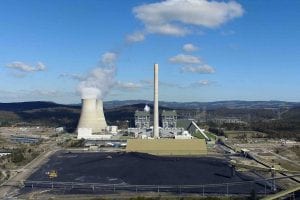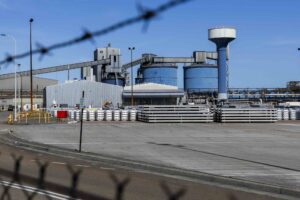A new report has underscored the “abject failure” of the Coalition government-era safeguard mechanism, revealing that total emissions from facilities covered by the mechanism have blown out by more than 9 million tonnes, a 7% increase, since reporting began.
The safeguard mechanism kicked off in July 2016 under the Abbott government, covering facilities with direct (scope 1) greenhouse gas (GHG) emissions of over 100,000 tonnes carbon dioxide equivalent (CO2-e) per annum.
In 2020-21 it was extended to 212 facilities across the mining, oil and gas, manufacturing, transport, and waste sectors to account for 137 million tonnes of CO2-e in FY21, or over one quarter (27%) of national emissions.
Since winning the election in May, the Albanese Labor government has promised to use the safeguard mechanism to actually reduce emissions, setting genuine limits on polluters before beginning to progressively lower those limits over time until Australia reaches net zero.
But there is still plenty of debate about what this might look like and whether the reforms will be effective. And groups like the Australian Conservation Foundation are keen to remind Labor about what is at stake – and what needs to be done.
“It’s 2022 and Australians are feeling the effects of climate change,” said Annica Schoo, lead investigator for the Australian Conservation Fund.
“The safeguard mechanism and the so-called Emissions Reduction Fund were the only policy tools the previous government deployed to address Australia’s spiralling climate pollution from industry – and to date they have been abject failures.
“Climate change and energy minister Chris Bowen has committed to change the safeguard, but there are many ways this could go wrong if big polluters get to set the rules.”
According to the ACF, since safeguard mechanism reporting began, total emissions from facilities covered by the mechanism have blown out by more than 9 million tonnes, a 7% increase.
Further, the mechanism currently “imposes virtually no obligations to reduce emissions on the 215 facilities that produce 28% of Australia’s climate pollution.”
As can be seen in the graph below, the list of Australia’s 10 highest-polluting companies is made up of a who’s who of big-name fossil fuel companies.

These 10 companies between them are responsible for 362 million tonnes of climate pollution – more than half the total emissions reported under the safeguard mechanism from 2017 to 2021.
“These are all big, publicly listed companies that have done more than their share of climate damage – it’s time for them to, at the very least, do their fair share to clean up their mess,” says Schoo.
“While emissions from coal mining have increased slightly over the five years, emissions from gas and oil extraction have ballooned by 20%, primarily due to the emergence of several new players in the sector.
“Big new proposed gas projects, like Woodside’s Scarborough mine, will blow out the safeguard even further.”

As such, the ACF has called for limits for facilities covered by the mechanism to be prescriptive and ambitious.
“A predictable phase down would give industry incentives to come up with innovative energy saving solutions to run their businesses more cleanly and efficiently,” Ms Schoo said.
“Ultimately it would make Australian industry more competitive in a global marketplace that puts a premium on products with a low carbon footprint.
“To date the safeguard mechanism has been a licence for big polluters to pollute more.”
The Albanese Labor government is in the process of applying changes to the safeguard mechanism, but as ACF’s Schoo warns, thes changes “will make or break Australia’s 2030 target.”
“The safeguard mechanism has the architecture to achieve credible emissions reductions in key sectors, but it needs serious surgery to turn it into an effective emissions-cutting tool,” Schoo concluded.
“This analysis shows the government could deal with a huge chunk of Australia’s emissions by tightening the pollution rules for ten companies; that’s low-hanging fruit.”








